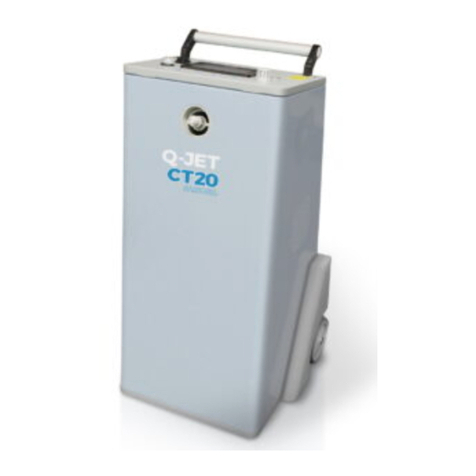Operating Manual Q-Jet CT20 © Sanosil 3/32
Table of contents
Table of contents.........................................................................................................................................................................................3
1. Use of symbols.........................................................................................................................................................................................4
2 Safety............................................................................................................................................................................................................4
2.1 Intended use......................................................................................................................................................................................4
2.2 Improper use .....................................................................................................................................................................................5
2.3 Dangers and warnings...................................................................................................................................................................5
2.4 Safety instructions for the aerosol and device:....................................................................................................................5
2.5 Authorised personnel.....................................................................................................................................................................7
2.6 Liability disclaimer...........................................................................................................................................................................7
3. CT20: Technology ...................................................................................................................................................................................8
3.1 Product description ........................................................................................................................................................................8
3.2 Technical device information......................................................................................................................................................9
3.3 Overview..............................................................................................................................................................................................9
4. User manual ........................................................................................................................................................................................... 10
4.1 General Settings............................................................................................................................................................................ 10
4.2 Disinfection mode ........................................................................................................................................................................ 11
4.3 Creating room profiles ............................................................................................................................................................... 15
4.4 Loading and activating a saved room profile.................................................................................................................... 17
4.5 Protocol ............................................................................................................................................................................................ 18
5. Possible usage profiles for the Q-Jet CT20 ............................................................................................................................... 19
6. Carrying out aerosol disinfection .................................................................................................................................................. 20
6.1 Room preparation ........................................................................................................................................................................ 20
6.2. Device preparation...................................................................................................................................................................... 21
6.3 Positioning the device: ............................................................................................................................................................... 23
6.4 Starting up the device................................................................................................................................................................. 23
6.5 After disinfection .......................................................................................................................................................................... 24
6.6 Disinfectant dosages................................................................................................................................................................... 25
7. Maintaining and servicing the device.......................................................................................................................................... 27
7.1 Mandatory air filter change...................................................................................................................................................... 27
7.2 Cleaning the nozzle ..................................................................................................................................................................... 28
7.3. Surface cleaning........................................................................................................................................................................... 28
7.4 Visual inspection ........................................................................................................................................................................... 28
8. Troubleshooting................................................................................................................................................................................... 29
9. Appendix ................................................................................................................................................................................................. 30
9.1 Declaration of Conformity ........................................................................................................................................................ 30
9.2 Warranty conditions .................................................................................................................................................................... 31
9.3 Disposal and decommissioning.............................................................................................................................................. 32
10. Additional Info (link) ........................................................................................................................................................................ 32




























